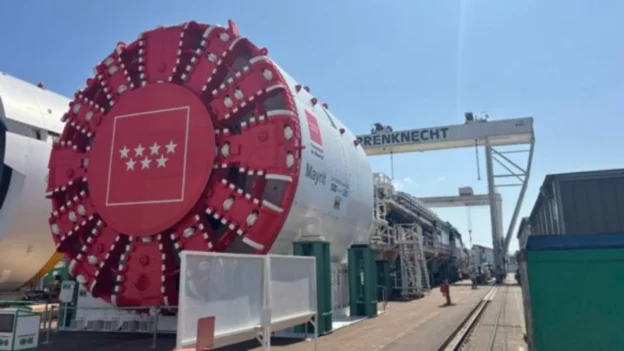The Community of Madrid has started the transfer by road of the imposing Mayrit tunnel boring machine, which will be key to the extension of Metro Line 11. After crossing the North Sea, the English Channel and the Atlantic, the Mayrit tunnel boring machine arrived at the Port of Santander and began its final journey to the Spanish capital. final journey to the Spanish capital.. With a design adapted to the conditions of the Madrid subsoil, the Mayrit will be assembled in the facilities near the future Comillas station, in Carabanchel.
German technology at the service of urban transport
Manufactured by Herrenknecht AG, the Mayrit is an EPB (Earth Pressure Balance) tunnel boring machine designed to excavate 6 kilometers between Plaza Elíptica and Conde de Casal. With a length of 98 meters long and weighing 1,500 tons, its daily capacity is 15 meters.its daily capacity reaches 15 meters of drilling.
The construction of the machine required twenty months of specialized work in Germany. The Minister of Housing, Transport and Infrastructures, Jorge Rodrigo, visited the facilities before the shipment and reaffirmed the regional commitment to the development of the subway mobility system.
Logistical challenge of relocation and assembly of the Mayrit tunnel boring machine
Due to its size, the TBM was disassembled to facilitate transportation. The components are traveling by road in a special convoy to Madrid, where the machine is expected to be fully assembled by March 2026.
This preparation process is part of the expansion plan of the L11which is already 18.4% complete on the section between Plaza Elíptica and Conde de Casal. Once operational, the Mayrit will significantly speed up excavation work, with a precision and performance that far surpasses traditional methods.
A commitment to infrastructure and mobility
The regional government has earmarked 518 million euros for this phase of the project, which seeks to transform Line 11 into a structural axis of the Madrid Metro. The arrival of the tunnel boring machine symbolizes a new impetus for public transport in the capital and represents a technical achievement in the execution of complex subway works. complex.
In addition to this section, the regional government has promoted other developments such as the extension of Line 3 to El Casar and the connection of Line 5 with Madrid-Barajas Airport, reaffirming a strategy of integration and expansion of the network.
Source and photo: Gacetín Madrid


